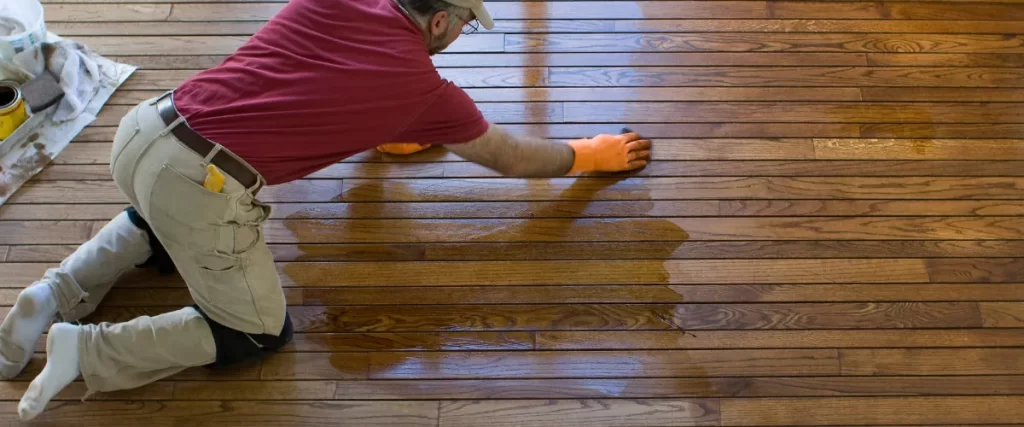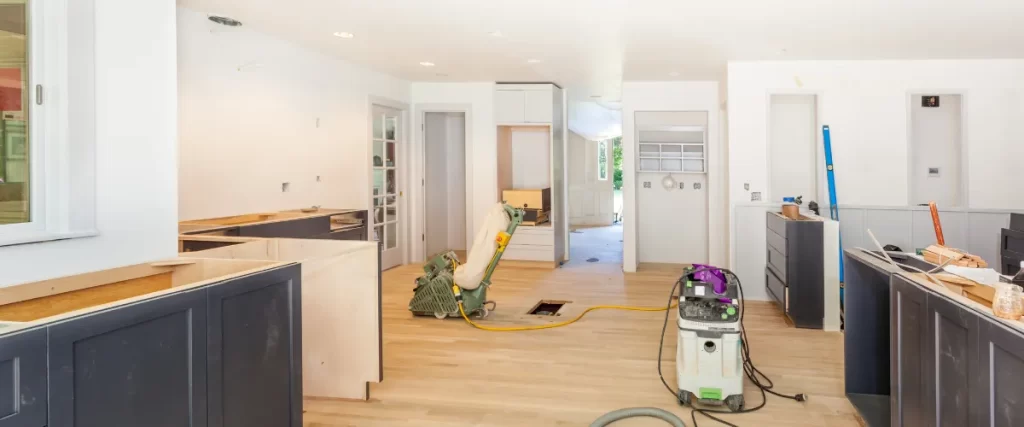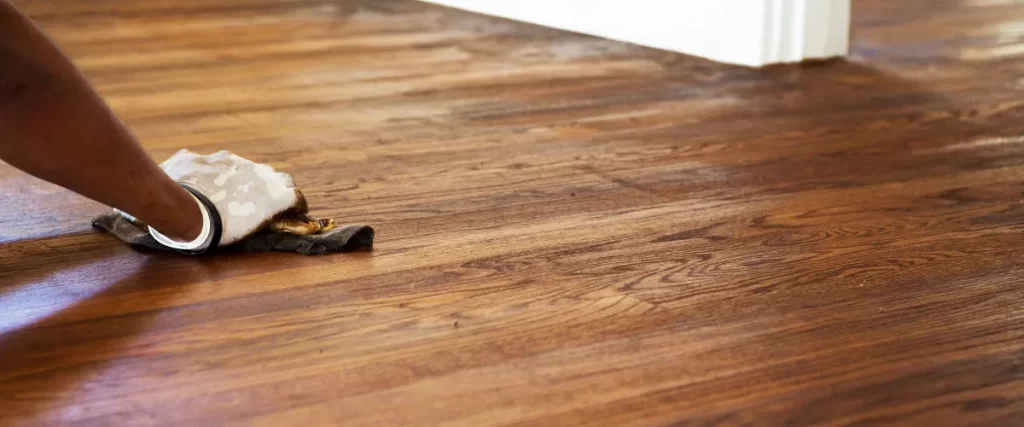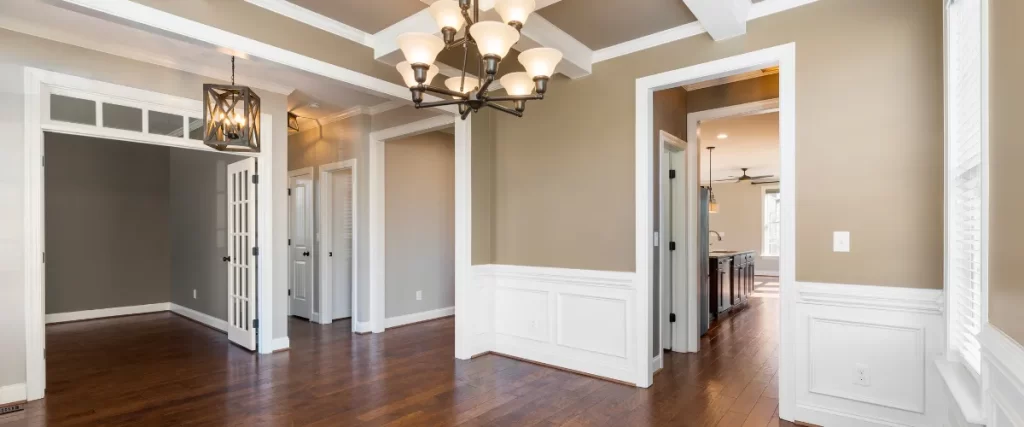
Historic homes in Roswell are beloved for their timeless charm and distinctive character—and hardwood floors play a big role in that appeal. If your home is located near Historic Downtown Roswell, you might be wondering if refinishing your hardwood floors is a viable option.
The answer is a resounding yes, but it comes with a few important considerations. In this post, we’ll explore how you can refinish hardwood floors in historic homes, discuss the benefits and challenges, and provide tips to help you maintain their beauty while preserving their historic integrity.
The Appeal of Refinishing Hardwood Floors
Refinishing hardwood floors offers a fantastic way to restore the original beauty of your home. Over time, hardwood floors can develop scratches, dents, or even lose their luster due to wear and tear.
Refinishing allows you to remove the old finish and apply a new, protective layer—revitalizing the natural beauty of the wood while also adding a layer of protection.
For homeowners in historic areas, refinishing is particularly valuable because it preserves the character and authenticity of the home.
Rather than replacing the floor entirely, which can be both costly and potentially disruptive to the historical fabric, refinishing allows you to keep as much of the original material as possible. This can help maintain the unique charm that defines homes near Historic Downtown Roswell.
Key Benefits of Refinishing:
- Restoration of Natural Beauty:
Bring back the rich grain, color, and warmth of your original hardwood. - Cost-Effectiveness:
Refinishing is typically less expensive than a full replacement. - Preservation of History:
Maintains the integrity of your historic home by keeping original materials intact. - Enhanced Durability:
A new finish protects against future wear, scratches, and moisture.
The Refinishing Process: What to Expect
Refinishing hardwood floors is a multi-step process that requires attention to detail and proper planning. Here’s a general overview of the steps involved:
- Assessment and Preparation:
- Inspection:
Evaluate the condition of your floors. Look for deep scratches, dents, or areas with water damage. - Cleaning:
A thorough cleaning is necessary to remove dirt, wax, and old finish residues. This ensures the new finish adheres properly. - Repairs:
Replace any damaged boards and fix loose nails or gaps. In historic homes, it’s important to repair rather than replace whenever possible to maintain authenticity.
- Inspection:
- Sanding:
- Surface Preparation:
Sanding removes the old finish and smooths the wood surface. This step is crucial, especially for floors that have been well-used over the years. - Dust Management:
Use dust extraction systems to minimize airborne particles. In historic homes, careful sanding preserves intricate details and character.
- Surface Preparation:
- Staining and Finishing:
- Stain Application:
If you want to change the color or enhance the natural grain, apply a stain that complements your home’s style. - Sealing:
A high-quality polyurethane or water-based sealant is then applied. This protects the wood and gives it a durable, long-lasting finish.
- Stain Application:
- Curing and Final Inspection:
- Drying Time:
Allow sufficient curing time as recommended by the product manufacturer. Avoid heavy foot traffic during this period. - Final Inspection:
Once dry, inspect the floor to ensure uniformity in color and finish. Any imperfections can be addressed with additional coats or minor touch-ups.
- Drying Time:

Challenges and Considerations for Historic Homes
While refinishing is an excellent option, working with historic hardwood floors comes with its own set of challenges. Here are some factors to keep in mind:
- Preserving Authenticity:
One of the biggest challenges is preserving the historical integrity of your floors. It’s important to choose finishes and stains that are in keeping with the original look of your home. If your floors have distinctive features such as hand-scraped textures or unique grain patterns, consult with experts who specialize in historic restorations. - Subfloor Conditions:
Older homes may have subfloors that require repair or additional moisture barriers before refinishing. Addressing these underlying issues is critical to ensuring the longevity of the new finish. - Environmental Factors:
Homes near Historic Downtown Roswell can be subject to varying humidity levels, which may affect the drying and curing process. Proper environmental controls during refinishing help ensure a smooth, durable finish. - Health and Safety:
Refinishing can generate a lot of dust and fumes. Ensure that you have proper ventilation and, if needed, professional help to manage these hazards safely.
Tips for a Successful Hardwood Floor Refinishing Project
To achieve the best results when refinishing hardwood floors in your historic Roswell home, consider the following tips:
- Hire Professionals:
If you’re not experienced in floor refinishing, hiring a professional who specializes in historic restorations can help ensure that the work is done correctly without compromising the home’s character. - Choose the Right Products:
Look for eco-friendly, low-VOC stains and finishes. These products are safer for indoor air quality and are better suited for preserving the natural beauty of historic wood. - Test on a Small Area:
Before committing to a full refinishing, test your chosen stain and finish on a small, inconspicuous area of the floor. This allows you to gauge the final appearance and make any necessary adjustments. - Maintain Your Floors:
Once your floors are refinished, establish a regular maintenance routine. Clean gently with appropriate products and avoid excessive water, which can damage the finish over time. - Document the Process:
Keeping records of the refinishing process, including the products used and techniques applied, can be helpful for future maintenance or when you decide to resell your home.

Refinishing Process and Considerations for Historic Hardwood Floors
| Step | Key Actions | Considerations for Historic Homes |
| Assessment | Inspect, clean, and repair floors | Preserve unique details; repair rather than replace where possible |
| Sanding | Remove old finish, smooth surface | Use dust extraction; careful sanding preserves character |
| Staining & Finishing | Apply stain and sealant; allow proper curing | Choose eco-friendly, low-VOC products; match original aesthetics |
| Final Inspection | Check for uniformity and durability | Address any imperfections with additional coats or touch-ups |
Frequently Asked Questions
Q: Can I refinish my hardwood floors myself, or should I hire a professional?
A: While DIY refinishing is possible, hiring a professional—especially one experienced with historic homes—ensures that the process is done correctly and preserves the original character of your floors.
Q: How often should hardwood floors be refinished in historic homes?
A: Depending on usage and environmental factors, refinishing every 5-10 years is generally recommended to maintain both appearance and protection.
Q: What if my hardwood floors have deep scratches or water damage?
A: Minor issues can often be repaired and refinished. However, extensive damage may require professional assessment to determine whether restoration or replacement is the best option.
Q: Will the new finish match the original look of my historic home?
A: A professional refinishing service can match the color and finish to your original flooring. Testing a small area first is always a good idea.
Q: How do I maintain my refinished hardwood floors in a historic home?
A: Regular cleaning, controlling indoor humidity, and periodic touch-ups will help maintain the finish. Avoid excessive water and harsh chemicals.
Q: Are there any special considerations for refinishing floors in older homes?
A: Yes, factors such as subfloor condition, historic preservation requirements, and environmental controls must be carefully managed to ensure long-term success.

Best Hardwood Floor Manufacturers
Choosing the right manufacturer ensures quality and durability for your hardwood floors. Here are the top manufacturers to consider:
- Bruce Hardwood Flooring: A trusted name offering a variety of stylish and durable hardwood flooring options for any home.
- Bona Flooring: Known for their eco-friendly approach and high-quality hardwood finishes that stand the test of time.
- Mullican Flooring: Renowned for premium craftsmanship and an impressive selection of solid and engineered hardwood.
- Pergo Hardwood: Combines innovative design with easy installation and maintenance for modern living spaces.
- Armstrong Flooring: Offers versatile designs and long-lasting hardwood flooring solutions to fit different styles and budgets.
Why Choose Our Team
Our team has been delivering exceptional hardwood flooring services for years. With industry expertise, we ensure top-quality results, saving you money. Contact us at to begin your hardwood floor refinishing project!
